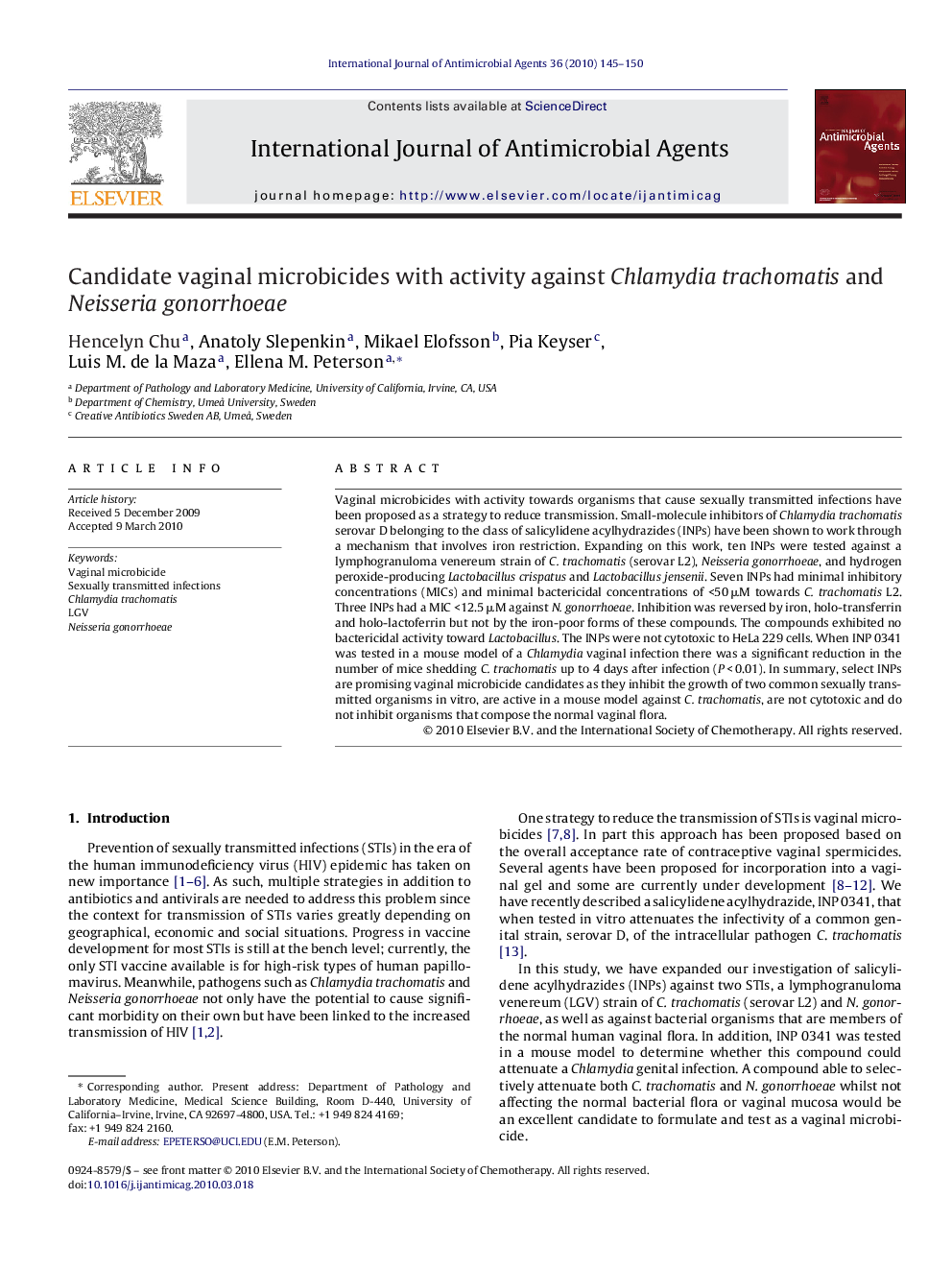| کد مقاله | کد نشریه | سال انتشار | مقاله انگلیسی | نسخه تمام متن |
|---|---|---|---|---|
| 3359661 | 1591831 | 2010 | 6 صفحه PDF | دانلود رایگان |

Vaginal microbicides with activity towards organisms that cause sexually transmitted infections have been proposed as a strategy to reduce transmission. Small-molecule inhibitors of Chlamydia trachomatis serovar D belonging to the class of salicylidene acylhydrazides (INPs) have been shown to work through a mechanism that involves iron restriction. Expanding on this work, ten INPs were tested against a lymphogranuloma venereum strain of C. trachomatis (serovar L2), Neisseria gonorrhoeae, and hydrogen peroxide-producing Lactobacillus crispatus and Lactobacillus jensenii. Seven INPs had minimal inhibitory concentrations (MICs) and minimal bactericidal concentrations of <50 μM towards C. trachomatis L2. Three INPs had a MIC <12.5 μM against N. gonorrhoeae. Inhibition was reversed by iron, holo-transferrin and holo-lactoferrin but not by the iron-poor forms of these compounds. The compounds exhibited no bactericidal activity toward Lactobacillus. The INPs were not cytotoxic to HeLa 229 cells. When INP 0341 was tested in a mouse model of a Chlamydia vaginal infection there was a significant reduction in the number of mice shedding C. trachomatis up to 4 days after infection (P < 0.01). In summary, select INPs are promising vaginal microbicide candidates as they inhibit the growth of two common sexually transmitted organisms in vitro, are active in a mouse model against C. trachomatis, are not cytotoxic and do not inhibit organisms that compose the normal vaginal flora.
Journal: International Journal of Antimicrobial Agents - Volume 36, Issue 2, August 2010, Pages 145–150